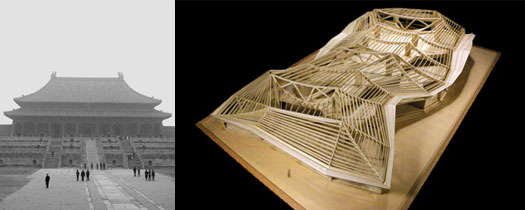
Action! The new Běijīng of businesses, consumers and feelings of fascination and mistrust towards the West comes across as something between arrogant and resolute on the little streets which lead to the so-called sìhéyuàn, enclosed patios between little houses which are grouped around alleyways called hútòng. The city’s underground system is expanding and wants to build shopping centres above its stations to take advantage of the crowds passing through. Nobody needs to be reminded of the economic implications, but the urban planning and architectural ones are another story.
People with recognised influence and manifest executive capacity propose Běijīng’s imperial character as a starting point for designing the new building. There are many chiefs and many interests. We will clearly have to think very carefully before stating our point of view. Our skills and prestige are what brought us to take part in the project, but we tend to work the other way round and our proposals take everybody’s point of view into account.
While adopting a show of humility so common in traditional Chinese culture, but forgotten in the present day, from here on the great buildings in the city begin to look at us. We thus slightly redraft a classical way of understanding things for them. Imperial? The Hall of Supreme Harmony, ‘tài hé diàn’, located in the Forbidden City, ‘zi jìn chéng’ (literally ‘Purple Forbidden City’).
Drafting provides enough freedom to make it evident that influences are strong. We lift up the points of the roofs to sharpen our views, intimating that the expanse of tiles could be a sheet under which all of us can play at being the little ghost. However, ‘imperial’ implies weight, inflexibility and that reminds us. So we listen again to what the place will be used for and thus, just as rushes bend with the wind, we agree while sneaking a glance at the grid of nervous hútòng alleyways. The scheme will try to satisfy the relentlessly repeated demands to build according to conventional models, but while also partially retaining the appearance of the traditional hútòng. In elevation the porticos show their imposing, imperial face and are positioned on the ground along lines which find inspiration in the city’s traditional urban planning. This hidden contribution is a layout which emerges both from tradition and from the need to seek out the structure of the underground station already under construction and above which the building will appear. The new porticos have several workable positions and many unviable ones, resulting in a dance which will look to the hútòng to establish order.
